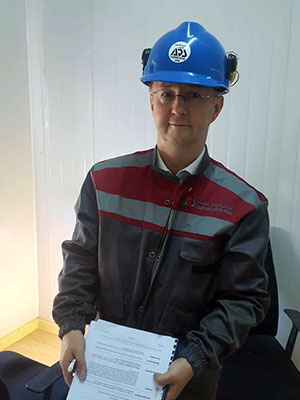Occupational health and safety: the ISO 45001 boom

The latest ISO Survey shows a sharp rise in the number of companies and sites with ISO 45001 certification. Four years after its launch, the flagship standard for building an occupational health and safety management system is spreading around the world, including in France.
For the first time, the number of active ISO 9001 certificates worldwide has topped the million mark, according to the latest ISO Survey, which stopped the clock at December 31, 2021. But this is not the most important figure to come out of this annual exercise, even though it concerns quality management, the standardized management system most widely used by companies worldwide. We prefer to draw your attention to ISO 45001, the cousin of ISO 9001 applied to occupational health and safety (OHS).

Patrice Koralewski, ISO 45001 auditor for AFNOR Certification (©DR)
In two years, the number of certified organizations in France has tripled, rising from 524 by the end of 2019 to 1,570 by the end of 2021. And it has increased eightfold worldwide: 38,654 in 2019 and 294,420 in 2021, particularly in China (two out of every three certificates worldwide are Chinese), Italy and the UK. Occupational health and safety management now ranks third in the hit parade of standardized management systems generating the most certifications, ahead of ISO/IEC 27001 (information security) and behind quality and the environment, with which it forms the QSE triptych. “This increase can be explained in particular by the end of the British-inspired BS OHSAS 18001 text, which was the standard until ISO 45001 took over. Companies had until September 11, 2021 to convert, and we note that 100% of former OHSAS-certified companies have switched to the new text,” explains auditor Patrice Koralewski, who visits companies claiming to apply this standard on a daily basis for AFNOR Certification.
A common structure for ISO 9001 and ISO 14001
The differences between OHSAS 18001 and ISO 45001 are often subtle, as we explained here. But the publication of the voluntary international standard in 2018 has given OHS management a boost, attracting a favorable ear from corporate QSE managers – and even their colleagues in the purchasing department – who have rediscovered the structure of the ISO 9001 (quality) and ISO 14001 (environment) standards. “The strength of these standards lies in the fact that they are based on a common foundation, which can be adapted to specific themes. And this, while taking into account the regulatory context, regardless of the labor laws that apply in the country concerned” , adds Patrice Koralewski. This argument is less convincing in France, where the MASE standard still dominates occupational health and safety management, and is still widely taught, as it is at AFNOR Compétences. But even in a country which tends to attribute this issue to regulation rather than standardization, good OHS management increasingly requires ISO certification.
This is all the more true in the building and civil engineering sector, which has the highest number of active ISO 45001 certificates: almost one in five certificates worldwide is held by a building and civil engineering company, according to ISO Survey figures. This is understandable: in this accident-prone sector, the safety culture is strong, and QSE managers have found in ISO 45001 an objective way of demonstrating to their stakeholders that they take the matter seriously, above and beyond their regulatory obligations. Companies have everything to gain: according to estimates, one euro invested in health and safety at work generates 2.20 euros in benefits on average, by reducing risks and accidents.
You can also consult our thematic dossier dedicated to health and safety in the workplace, as well as our dedicated FAQ.